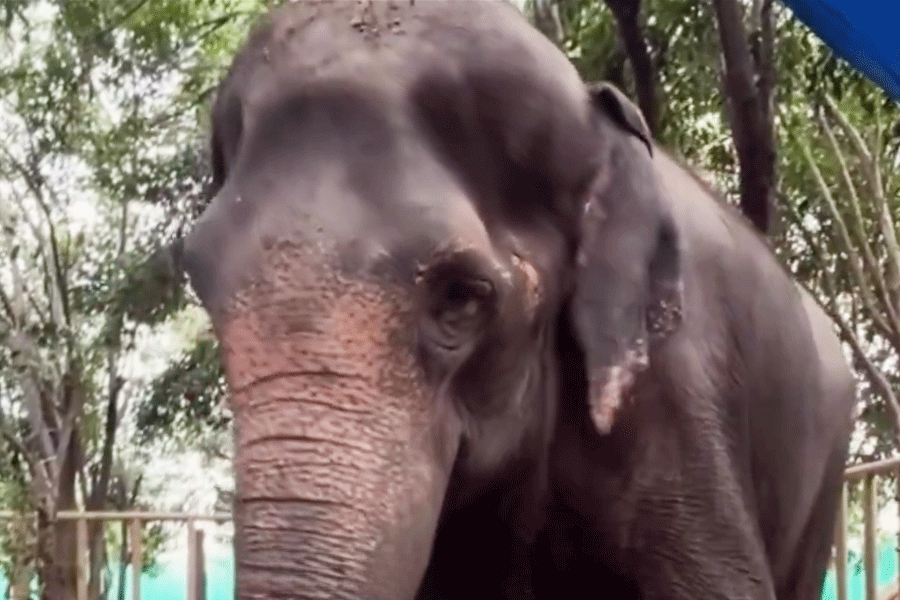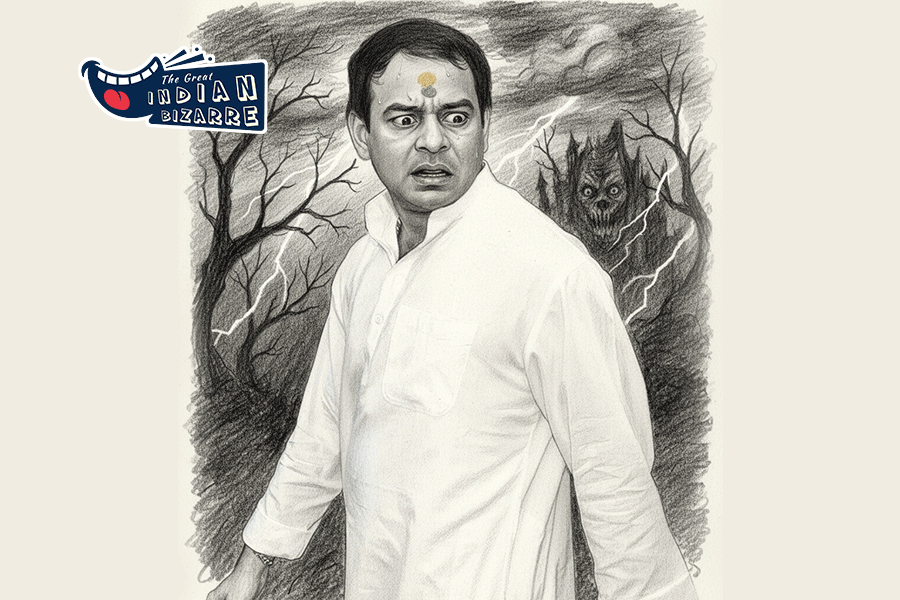 |
| Students attend class at the open-air school at Dhobiatola village in East Champaran. Picture by Rakesh K Singh |
The government has decided to shower Saran district’s Dharmasati-Gandaman village with sops but only after a tragedy claimed the lives of 23 children there.
Chief minister Nitish Kumar on Wednesday announced a special scheme to turn Dharmasati-Gandaman into a model village — equipped with a high school, public healthcare centre, all-weather road, drainage system, potable water facilities.
The government seems to have woken from its slumber. But what most people across the state want to know is do neglected primary schools require a tragedy to attract promises of development.
At Dhobiatola village in Motihari (East Champaran), around 140km from Chhapra, The Telegraph found a group of children sitting in the open with a lady seated on a plastic chair. It is the primary school with 86 students.
“One can call it a shifting school, as it shifts from one place to another every season. It started as a one-room establishment in 2006 but soon the building caved in. During summer and monsoon, the school runs from the residence of some villager. If not, it runs in the open,” said Amita Kumari, who joined as the headmistress in 2006.
“It was shocking. The more shocking part was Nitish Kumar not visiting the place even once. He could have gone to Patna Medical College and Hospital to visit the kids undergoing treatment. The village would be provided with facilities. Before the tragedy, Dharmasati Gandaman village, like ours, was on the government’s neglected list. It might sound disturbing, but it seems any form of tragedy is the parameter for a village to get basic facilities now,” said a villager.
Dhobiatola village, like the one in Saran, doesn’t have proper roads and drainage facilities. “There is electricity connection but we usually go without power for over 20 hours a day. The nearest health centre is around 4km away in Banjaria block,” another resident said.
Amita said she didn’t implement the midday meal scheme until 2010. “What do we do? Where do we cook the food? In 2010, I had to start it because of administrative pressure. The school doesn’t have a cook. The food is cooked at some villager’s home and the edibles stored there itself. The family that cooks the food gets a share of the meal for their children, which is mostly khichdi. How do we monitor how the food is being cooked? Why cannot the government first provide basic infrastructure and then get on with the scheme in a proper way,” Amita asked.
In Gaya, the condition of the primary school at Phuleldih village, located around 90km from the district headquarters is similar. “The primary school consists of two small rooms with cracked floors and 161 students are crammed into these rooms. The midday meal is prepared in the open, as there is no facility to cook under a roof. The village has no electricity connection or proper road connectivity,” said Dayanand, a resident of the village.
At Hariobara village, around 3km from Phuleldih is located a three-room primary school with 121 students. “There is no kitchen or toilet or hand pump in the school. The food is cooked outside and there have been times when insects have been found in the meal. Maybe now, if an insect falls into the midday meal, gifts will be announced,” Suhan Kumar, a villager said.
The political blame game, which has been on ever since, is unending though. On the proposed development of Dharmasati-Gandaman, RJD leader Abdul Bari Siddiqui said: “This is just an eyewash. The village saw no development ever. Now, after this tragedy, there has been a shower of welfare schemes. Now, development will come to villages only when there is a tragedy.”











